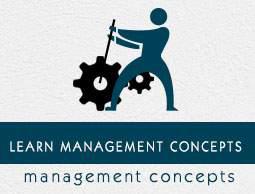Project Scope Definition
Introduction
When it comes to project planning, defining the project scope is the most critical step. In case if you start the project without knowing what you are supposed to be delivering at the end to the client and what the boundaries of the project are, there is a little chance for you to success. In most of the instances, you actually do not have any chance to success with this unorganized approach.
If you do not do a good job in project scope definition, project scope management during the project execution is almost impossible.
The main purpose of the scope definition is to clearly describe the boundaries of your project. Clearly describing the boundaries is not enough when it comes to project. You need to get the client's agreement as well.
Therefore, the defined scope of the project usually included into the contractual agreements between the client and the service provider. SOW, or in other words, Statement of Work, is one such document.
In the project scope definition, the elements within the scope and out of the scope are well defined in order to clearly understand what will be the area under the project control. Therefore, you should identify more elements in detailed manner and divide them among the scope and out of scope.
How to Define the Project Scope
When the project is about to be funded, there should be a set of defined deliveries and objectives for the project. There can be a high level-scope statement prepared at this level.
This high-level scope statement can be taken from the initial documents such as SOW. In addition to the SOW, you need to use any other document or information in order to further define the project scope at this level.
In case, if you feel that you do not have enough information to come up with a high-level scope statement, you should then work closely with the client in order gather necessary information.
Project objectives can be used for defining the project scope. As a matter of fact, there should be one or more deliveries addressing each project objective in the project. By looking at the deliverables, you can actually gauge the project scope.
Once you get to know the main deliverables of the project, start asking questions about the other processes and different aspects of the project.
First identifying and clearly defining the out of scope also helps you to understand the scope of a project. When you go on defining the out of scope, you will automatically get an idea of the real project scope. In order to follow this method, you need to have a defined scope up to a certain level.
Whenever you identify an item for the scope or out-of-scope, make sure you document it then and there. Later, you can revisit these items and elaborate more on those.
Once you have successfully defined the scope of the project, you need to get the sign-off from the related and applicable parties. Without proper sign-off for the scope, the next phases of the project, i.e., requirements gathering, might have issues in executing.
Scope Creep
Scope creep is something common with every project. This refers to the incremental expansion of the project scope. Most of the time, the client may come back to the service provider during the project execution and add more requirements.
Most of such requirements haven't been in the initial requirements. As a result, change requests need to be raised in order to cover the increasing costs of the service provider.
Due to business cope creep, there can be technological scope creep as well. The project team may require new technologies in order to address some of the new requirements in the scope.
In such instances, the service provider may want to work with the client closely and make necessary logistic and financial arrangements.
Conclusion
Project scope definition is the most important factor when it comes to project requirements. It is vital for service providers to define the scope of the project in order to successfully enter into an agreement with the client.
In addition to this, the scope of the project gives an idea to the services provider about the estimated cost of the project. Therefore, service provider's profit margins are wholly dependent on the accuracy of the project scope definition.


